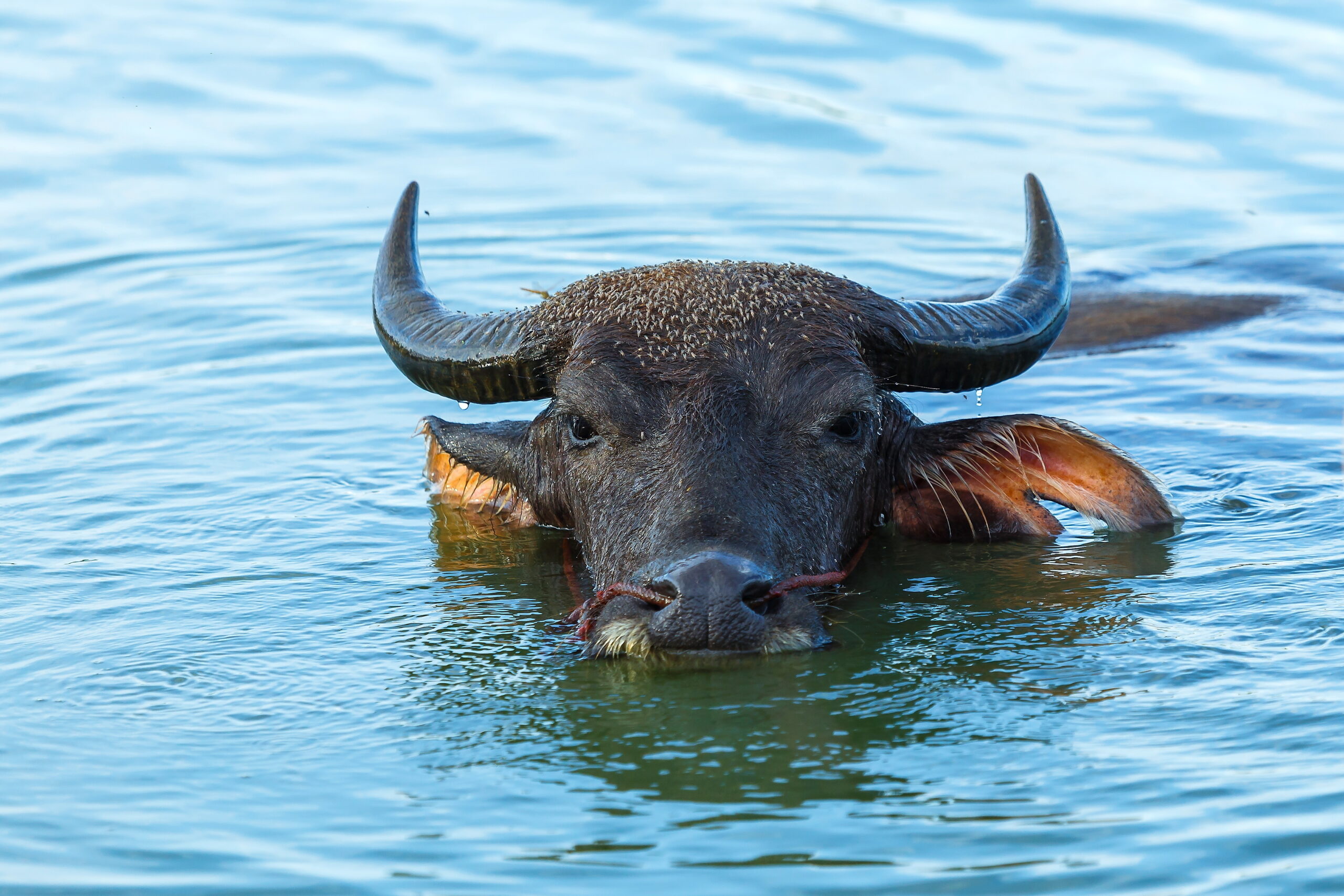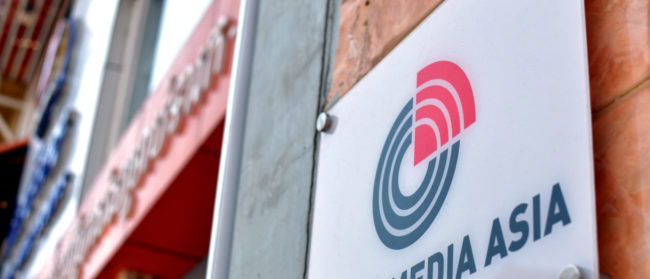Vietnam’s unofficial national animal is the hulking but gentle trâu rừng. The water buffalo was essential to the country’s agrarian economy in decades past but as the animals are swapped out with machinery the status of trâu rừng has waned.
Thi Thu Huong Kieu of Thai Nguyen University of Agriculture and Forestry said the relationship between people and buffalo has changed significantly since her childhood.
“Buffalo were helping a lot of people and they were considered like a friend or a part of the family but nowadays it is very different,” she said. “In the past, buffalo were the most valuable asset of the farmer.”
Whereas domestic buffalo were often treated as a family member in years past, today they are more often used as a source of protein.
“[Buffaloes] are being replaced by machines in transport and agriculture which makes them become more like a source of meat to many people these days,” said Thanh Nguyen, animal welfare officer for Animals Asia. The water buffalo weighs in at over 1,000 kilograms (2,204 pounds), has long bow-shaped horns and emits deep, guttural grunts.

Wild water buffalo are considered near-extinction in the country and there are no ongoing conservation efforts for the species. Though Animals Asia has advised authorities in the northern city of Hai Phong and Vinh Phuoc Province to stop water buffalo fighting festivals which conclude in mass slaughter.
“In buffalo fighting festivals, bulls are forced to fight each other, with their horns sharpened, to increase the lethality and a chance of winning,” Thanh said. “Eventually they are all killed after the fights, whether they win or lose the battle.”
Animal Asia’s campaign has not put a halt to the festivals but has succeeded in reducing the number of buffaloes participating. “Tradition does not need to involve animal cruelty,” Thanh said.
The International Union of Conservation of Nature’s (IUCN’s) Red List of threatened species, which ranks wildlife between ‘least concern’ and ‘extinct,’ lists wild water buffalo as ‘critically endangered.’ Just 4,000 animals remain worldwide, according to a 2008 species report by the IUCN, which also considers wild water buffalo likely extinct in Vietnam. However, Thanh said forest rangers in Yok Don National Park in Dak Lak Province spotted trâu rừng in 2019.
The water buffalo still remains a significant symbol for the country despite their declining position, Thanh said.
“The image of buffalo has been used in different areas of Vietnamese culture ranging from poetry, sculpture, national bronze drums and carvings,” he said. “Buffalo best represents Vietnamese people’s characteristics including hardworking, friendly, and [their] durability.”
This article is part of Southeast Asia Globe’s World Wildlife Day Special series.


